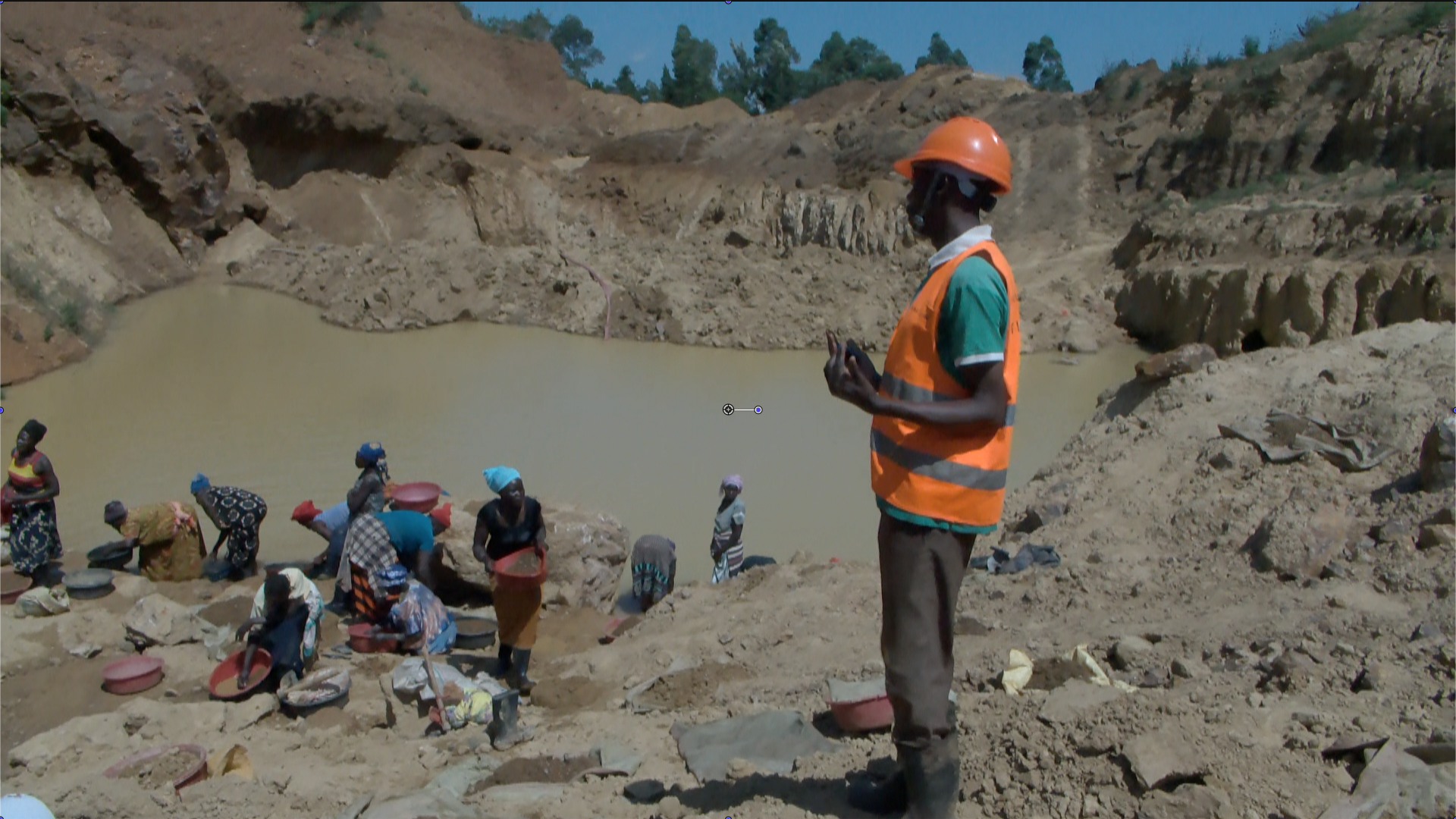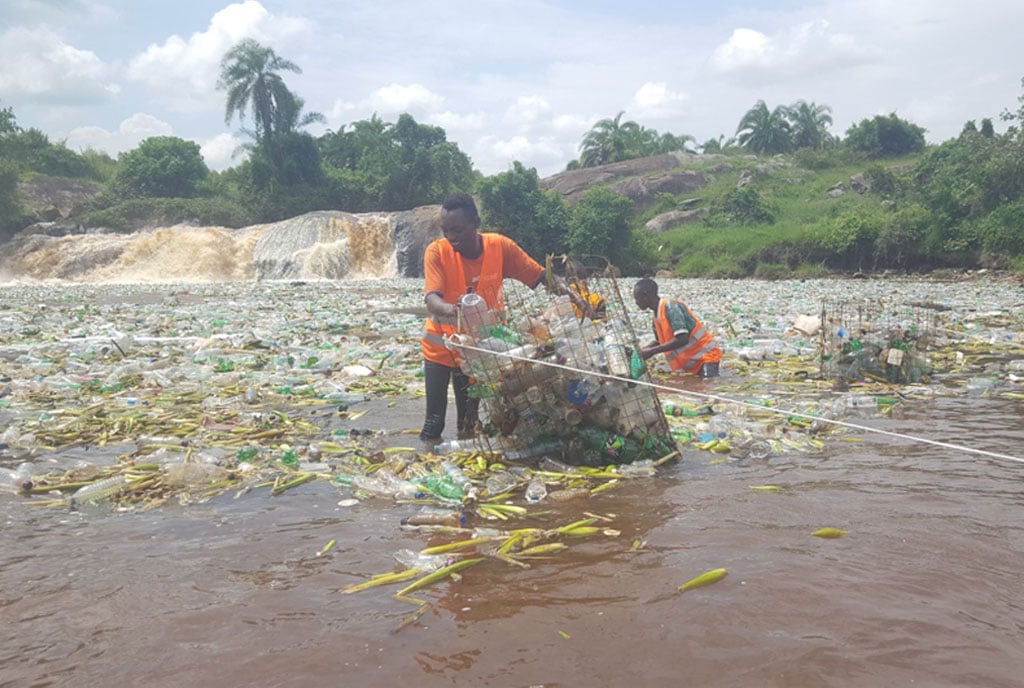Prime
Gold mining threatens biodiversity in Lake Victoria

Women carry out gold mining at Buhehe in Namayingo District last week. PHOTOS/RITAH KEMIGISA
What you need to know:
- Gold mining activities have left once thriving areas of farming on the shores of Lake Victoria bare. Despite environment authorities sensitising the masses about other alternatives and urging miners to get operational licences, many residents don’t have the financial capacity to implement such measures, writes Ritah Kemigisa
The MV Sigulu vessel gently sails across Lake Victoria on its way to Sigulu Islands, a remote enclave in Namayingo District.
This vessel was introduced in 2020 to connect the remote Sigulu and Lolwe islands to Lugala mainland in Namayingo.
Adjacent to Kenya, Sigulu has lush vegetation and its previously towering canopy of trees continue to vanish as a result of deforestation to pave way for gold mining activities.
Sigulu forms part of the neorchean Busia-Kakamega granite greenstone belt. Gold was first discovered in Busia District in 1932 in Osipiri.
Small scale mining operations on vein and alluvial deposits soon began after this discovery in Tiira, Makina, Amonikakine and Osapiri villages, and are still ongoing.
With the exception of Tira and Amonikakine where gold is recovered from reefs consisting of hard rock, most of the gold is recovered from alluvial material by artisanal and small-scale miners. Recently, gold rushes have been reported in Bude, Nakudi and Busuma mines in Namayingo.
Mr David Ssebagala, the senior inspector of mines at the Energy and Mineral Development ministry, says majority of the people doing mining around the shores of Lake Victoria in Namayingo are doing so illegally.
“Looking at the mining cadaster within Namayingo, around the shores of Lake Victoria and Sigula, we have not issued any mining licences there. What we have there are exploration licences which were given to Zonghong tin and nonferrous metals companies,” he says.
This part of the island is a host to scores of artisanal and small-scale miners who use rudimentary tools to dig the bowels of the earth.
It is also enveloped by poverty and its population can barely identify with the President Museveni’s announcement in July that surveys indicated that the country had discovered gold deposits worth $12 trillion.
If it is proven that Uganda has $12trillion of gold deposits, this could be a boom for the third world country and outstrip the entire market cap of all gold mined ever.
Many of the women engage in activities such as panning while the men use ladders to access deep tunnels that often turn into death traps. In February, Parliament passed the Mining and Minerals Bill, which the President assented to in October. The Act recognises the role of artisanal miners who are required to pay about Shs380m for a licence. It is a fee many artisanal miners cannot afford.
Elemental mercury use is also prevalent in gold mining in Sigulu and other areas in Namayingo and Busia districts. Mercury is mixed with gold-containing materials, forming a mercury-gold amalgam which is then heated, vaporising the mercury to obtain the gold.

A woman extracts gold at a mine in Tira Town Council, Busia District, last year. PHOTO/FILE
This process can be very dangerous and lead to significant mercury exposure and health risks. In some jurisdictions, mercury use may be illegal or restricted in certain ways.
The Minamata Convention on Mercury, a global agreement for reducing mercury pollution, recognises the risks of using mercury in artisanal and small-scale gold mining, and urges nations to reduce, and where feasible, eliminate mercury use in this sector.
Many of the gold mine activities have left a destructive trail that poses a threat to biodiversity, human life, agriculture and aqua-culture, crippling food security, nutrition and sustainable livelihoods.
Research shows that byproducts such as mercury and heavy metals, including lead work their way into the food chain and pose health risks to humans and animals for generations.
When it rains across Sigulu, some of this toxic waste from these gold mining activities is often swept into the lake.
The contaminated water referred to as acid mine drainage, a toxic cocktail, is destructive to aquatic life and poses a threat to the fish.
“The Nema Act prohibits any mining operations within 200m radius from all water bodies, so we do not authorise and issue mining licences within that radius,” Mr Ssebagala says.
“We are doing a lot of sensitisation in mining communities, we educate them on proper mining and extraction methods that do not pollute the environment. We also encourage them to formalise their operations for their security because if you have a mining licence, you will not be chased away. We also make sure they work within the confines of the law because where they cause damage, they restore after operations.”
READ: Plastic pollution soaring in face of govt complacency
Mr Emmanuel Kibirige, the national coordinator of Uganda Association of Artisanal and Small-Scale Miners, says they have separated mining space from the processing one in Mubende.
“The processing uses a lot of water and we have constructed more than four boreholes for the community together with a small swamp where we get water. We have a dumping space for waste tailings after crushing the ores to extract the gold,” he says.
Many of these areas at Sigulu Islands and on the shores of Lake Victoria are in ruin as the landscape is dotted with excavated pits and trenches.
Some of the locals involved in artisanal mining at the islands were previously fishermen who fled the lake after the UPDF marines section embarked on an operation to get rid of those engaged in immature fishing.
At Buhehe, once a thriving fishing village in Bukana Sub-county on the shores of Lake Victoria, Namayingo, gold mining activities have led to deforestation.
Gold pits occupy land which was previously cultivated for food crops.
“When mining started, the hill was cultivatable but it is now full of pits. The miners destroyed the place, they dig pits and leave the hill with stones. Even the big trees were cut down, the miners were using them to burn the hard rocks inside the pits,” says Mr Ramathan Masinga, an artisanal miner.
Studies show that soils abandoned at mine sites have sandy particles and contain significantly higher concentrations of heavy metals but lesser concentrations of nutrients than those in the farmlands and the relatively undisturbed areas.
“There was a time when some people came and wanted to pump for us safe water from Lake Victoria but according to their survey, it was found that the water was contaminated with mercury,” Mr Masinga says.
Craters have formed across Tiira Sub-county in Busia as gold mining activities continue to damage the environment.
However, there is a campaign underway to sustain safer gold methods relying on the construction of underground tunnels.
“From the challenges of open cast mining, which have operated for quite a long time, we are now slowly changing to underground method with timbering, the actual work plan is that within the shortest time, we needed to have one concrete shaft and this is what we are doing apparently,” Eriya Emoite, the spokesperson of Tiira Artisanal and Small-scale Miners Association, says.
The Energy ministry is also advocating for the use of borax as an alternative to mercury.
“We are working with Nema (National Environment Management Authority) on a project that is funded by Partners for Community Transformation (PACT) and that project is aimed at promoting the use of alternative extractive techniques for gold that do not involve the use of mercury. We are trying to promote the use of borax technology in gold recovery, which is less dangerous to the environment and does not lead to the release of mercury within the environment,” Mr Ssebagala says.
The miners are, however, against this alternative.
“We as miners have for a long time known borax and mercury; these two do not do the same thing. Borax has its own work and mercury has its own. The alternative government is giving us might not work. Somehow, we shall collide along the path because you cannot completely eradicate mercury and tell us to use borax, which does not work like mercury,” Mr Simon Wabwire, an artisanal miner, says.
But these methods are costly.
Mr Joshua Rukondo, the senior officer of Solidaridad project in East and Central Africa, an organisation, which promotes sustainable livelihoods, says some of the alternatives do not favour most miners financially.
“Setting up a small cyanide leaching plant could almost come to the cost of building a house, mercury is the cheapest to artisanal miners and is most readily available and easy to use as it shortens the process as compared to other alternatives,” he says.

A man at a gold mine in Tira Town Council, Busia District, last week.
It is not far away from Tiira where porous outlets across the Uganda-Kenya border have turned into major smuggling routes for mercury. Once in Uganda, mercury is sold openly in shops.
The artisanal association has appealed to the ministry of Energy and Mineral Development and Nema to harmonise their laws on the use of mercury. “These two organisations need to work together, for example, the Nema Act gives permission for one to import some of the chemicals used in the process of extracting gold like mercury but in the new mining law, mercury is prohibited and punishable,” Mr Kibirige says.
“My prayer is that government sensitises people about the danger of using mercury because the land is also contaminated, and crops do not grow properly in areas where water with mercury has passed. We also the need reforestation,” he adds.
With climate change already creating a food security crisis and an existential threat to mankind, gold mining activities that are destructive to bio-diversity and pollute water sources ought to be halted.
“Most importantly, the government must take it as the first step forward to licence and locate the practitioners in the gold industry, after licensing them issues of environmental degradation will be very easy,” Mr Kibirige says.
Mr Ssebagala notes that regulation of artisanal miners remains a big challenge because they are not formalised.
“The problem is that when you go to enforce provisions of the Mining Act, the political leaders hinder and politicise the process. You can cancel a mining operation for being illegal but politicians call you and say you can’t send away their people who are earning a living, the technocrats are saying this but the politicians are saying otherwise,” he says.




